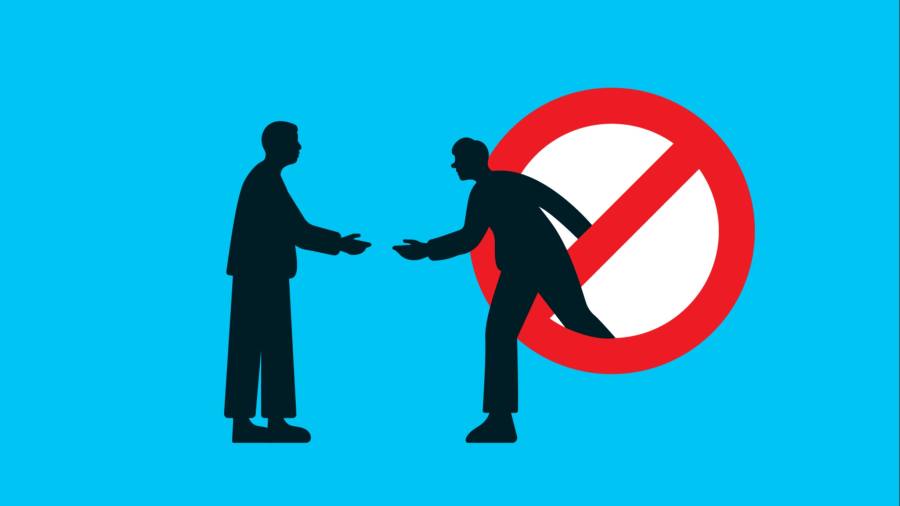
Just after midnight on April 1 2001 the world’s first four gay marriages were sealed in Amsterdam town hall. Five months later, the world changed again, this time for the worse: on September 11, planes hit the Twin Towers.
The two events put two minority groups, gay people and immigrants, on opposing trajectories. Gay people rapidly gained acceptance across the west. Today, 32 countries recognise same-sex marriage, and hardly anybody to the left of the US Supreme Court still worries about the issue. By contrast, after 9/11, immigrants, already stigmatised as the “other”, fell under suspicion of terrorism. But in recent years we’ve seen a quiet yet momentous shift: immigrants are becoming accepted as gay people were. The key, in both cases: everyday contact.
It was the American psychologist Gordon Allport who theorised, in the 1950s, that contact could reduce prejudice. He’d been particularly struck by data on the rare cases when black and white servicemen had served together (against the rules) in the US Army in the second world war. When that happened, the number of white servicemen expressing prejudice against black people was nine times lower than in segregated army companies.
Contact theory has since established itself as one of the most robust insights in social science. Why did acceptance of homosexuality in the US jump fivefold from 1973 to 2016? Thanks to increased contact, argues sociologist Daniel DellaPosta of Penn State University. As more gay people came out and demanded their rights, straight people realised they had gay acquaintances, friends, even children. The case study was Ohio senator Rob Portman, an opponent of gay marriage who announced his “change of heart” after his son came out. Gay people entered what philosopher Peter Singer called the “expanding circle of altruism”.
Now that’s happening with immigrants. Contact theory works when the contact is positive. If you only see immigrants from a distance – perhaps speaking a foreign language across the street – your fleeting interactions might increase your prejudices. But, in many places, positive contact has become an everyday experience as people of immigrant origin entered schools, workplaces and formerly native neighbourhoods. I see this with my children: whereas I was raised in an almost entirely white small town, they have grown up in multiracial Paris, go to school with kids of different ethnicities and take the mix for granted. Contact theory is how they live.
Surveys show a remarkable growth of acceptance of immigrants across the west. “Attitudes towards migrants across Europe have become more positive year-on-year for the last 20 years or so,” sum up James Dennison and Andrew Geddes of the European University Institute. British attitudes to immigration “transformed” positively from 2002 through 2018, says the Institute for Public Policy Research. French racial tolerance is at an all-time high, according to the annual survey by the National Consultative Commission of the Rights of Man. Over nine in 10 Germans are satisfied with the living together of people from different cultural backgrounds, reports the Sachverständigenrat für Integration und Migration, an independent research body. No wonder the European Commission plans to make legal migration easier.
Meanwhile, in the US in 2020, the percentage of Americans saying they wanted less immigration was the lowest since Gallup began polling on the issue in 1965. “Attitudes toward immigration are more positive now than at almost any time in US history,” says Ran Abramitzky of Stanford. These trends continued through apparently earth-moving events like the 2008 financial crisis, Europe’s migrant influx of 2015, Brexit, Donald Trump’s election and Covid-19. Other trends have helped. Fear of Islamic terrorism is giving way to fear of far-right violence. Labour shortages, especially in healthcare, are creating demand for more immigrants, and that will only increase as western populations age.
Of course, some people, especially older ones who rarely mix with immigrants, still fear multiculturalism. They have grown more vocal and politically organised precisely because they feel they’re losing the argument.
These anti-immigration movements have had to seek their scapegoats further afield. Instead of bashing migrants who already live in their countries, they now bash those trying to arrive through illegal routes. Desperate people crossing the Channel or the Mexican border, seen only in chaotic TV images, haven’t yet benefited from contact theory.
But I suspect they’ll get there, as will other contemporary scapegoats. Meanwhile, one pariah group continues to live happily outside the circle of altruism: liberal elites, who have practically no contact with the people who despise them.
Follow Simon on Twitter @KuperSimon and email him at simon.kuper@ft.com
Follow @FTMag on Twitter to find out about our latest stories first







